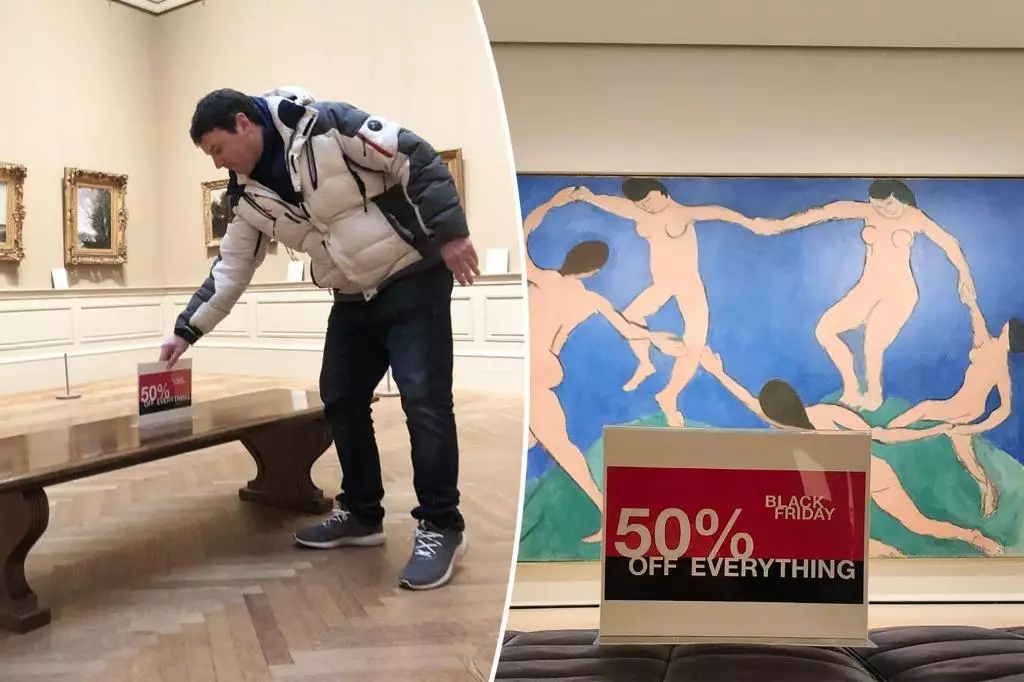In an era where consumerism reigns supreme and the boundaries of traditional art are continuously challenged, the recent auction of a duct-taped banana—is a striking illustration of this phenomenon—made waves not just within the art community, but across cultural landscapes. This viral incident, where a 74-year-old New York City fruit vendor’s mere 35-cent banana transformed into a $6.2 million art piece, raises significant questions about what we value in art. Enter Nelson Saiers, a banker-turned-artist, whose recent actions at the Museum of Modern Art (MoMA) presented a bold commentary on society’s values in relation to art and commerce.
Artistic Disruption and Social Commentary
Saiers’ installation, aptly dubbed “Black Friday 50% off Everything,” sought to expose the absurdity of a culture fixated on monetary gain. By placing signage indicating discounts throughout the museum, including in front of Matisse’s renowned painting of dancing women, Saiers effectively juxtaposed commodification against the backdrop of cultural sophistication. His intention, as he articulated, was to shine a light on the overwhelming presence of capitalism within the art world. The banana that garnered $6.2 million, in his view, symbolizes a troubling shift toward valuing art based not on its inherent quality or message but rather its market potential.
This form of artistic intervention is fascinating for several reasons. It is not merely a critique but serves as a reflective exercise for viewers, prompting them to reconsider the reasons behind their own valuation of art. Oftentimes, the public is caught in the crosshairs of art’s evolving landscape, where the worth assigned to a piece becomes a question of status rather than substance.
Influence and Historical Context
Saiers is not a stranger to civil disobedience in the art world; he previously garnered attention for distributing fake brochures at the Metropolitan Museum of Art. This trend reflects a broader movement within contemporary art where the act of merely challenging established norms can be as significant as the art itself. By mimicking traditional art practices but subverting them—such as introducing faux marketing strategies—he invites dialogue about the intentions behind artistic endeavors.
Moreover, by situating his critiques within esteemed institutions, Saiers magnifies the implications of his actions. The MoMA, often considered the pinnacle of modern artistry, becomes a stage for highlighting the rampant commodification prevalent in even the most sacred spaces of culture.
Ultimately, the dialogue surrounding Saiers’ installation, paired with the commercialization of the banana, provides fertile ground for contemplation. The tension between art and commerce is palpable, and as creators like Saiers continue to push boundaries, they challenge us to reconsider what we value. As consumers, collectors, and audiences, it is crucial to evaluate whether we engage with art for its depth or simply its monetary allure. The juxtaposition offered by Saiers serves not just as a critique, but as a call to action—to unearth the meanings behind the art we cherish and challenge the economic forces that shape its existence.

